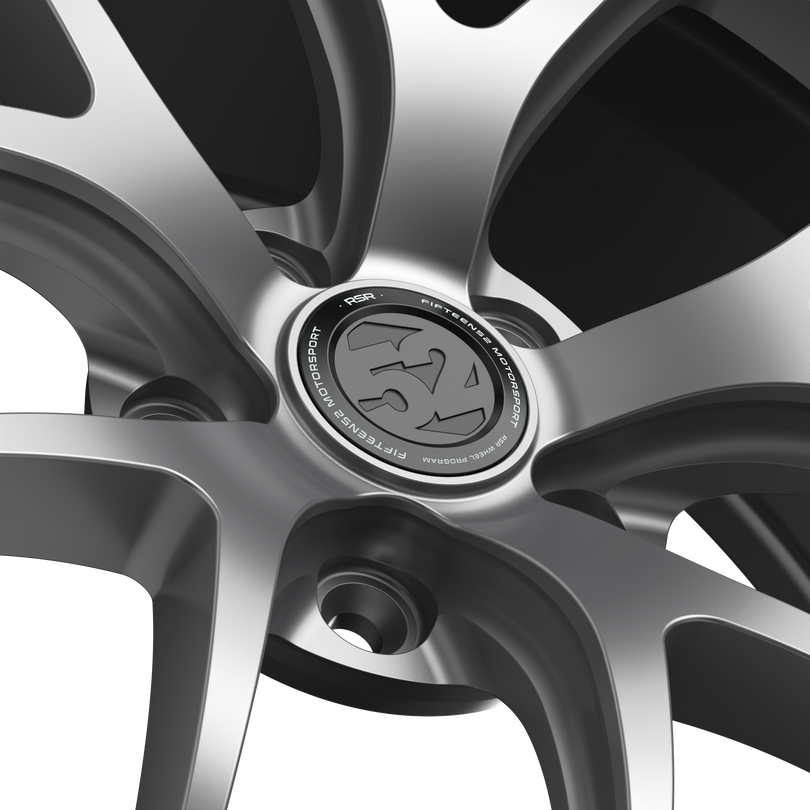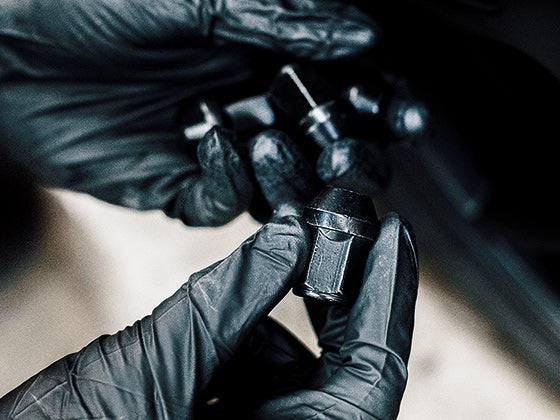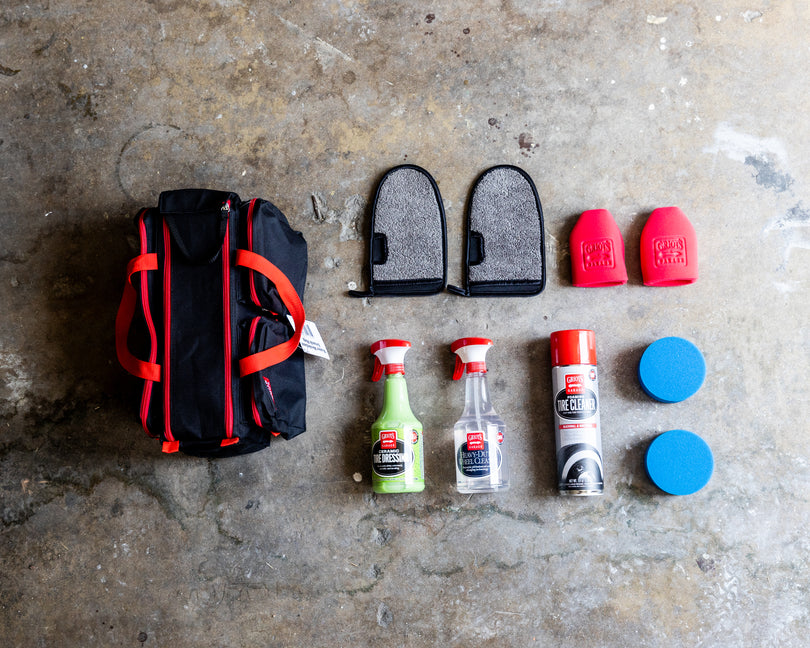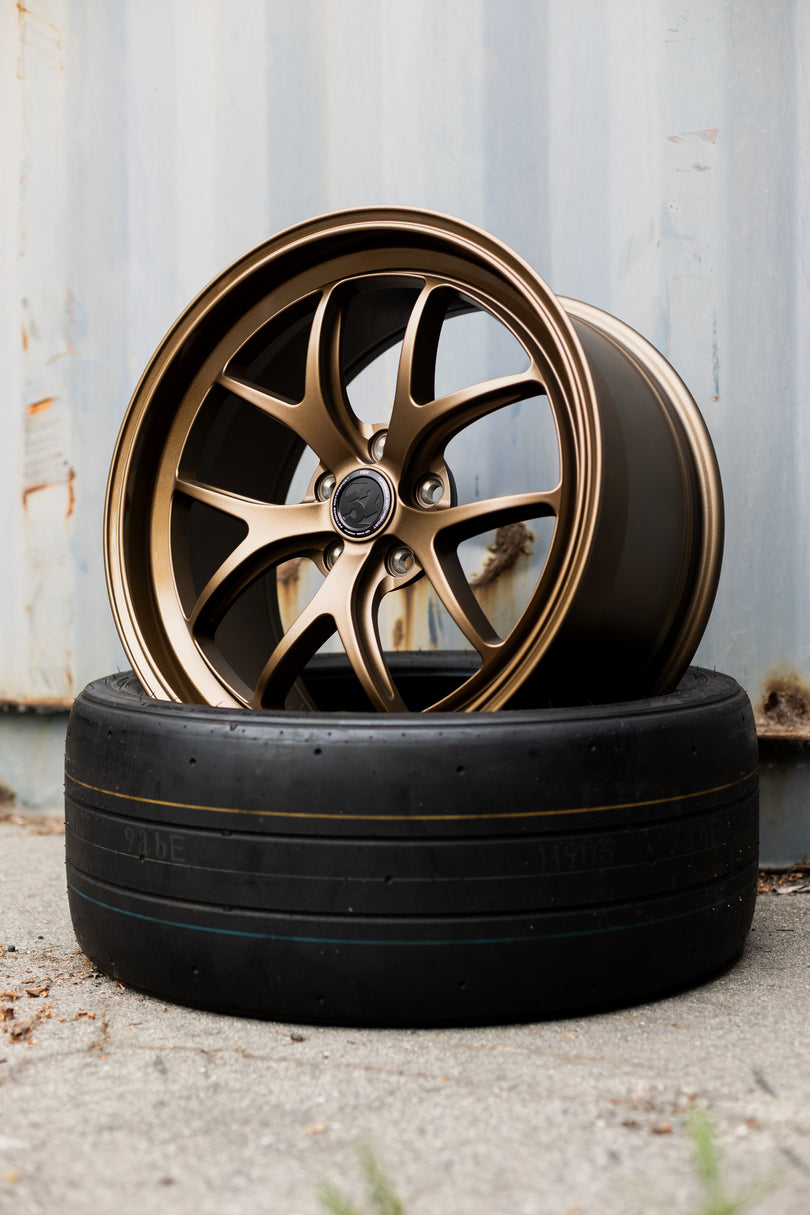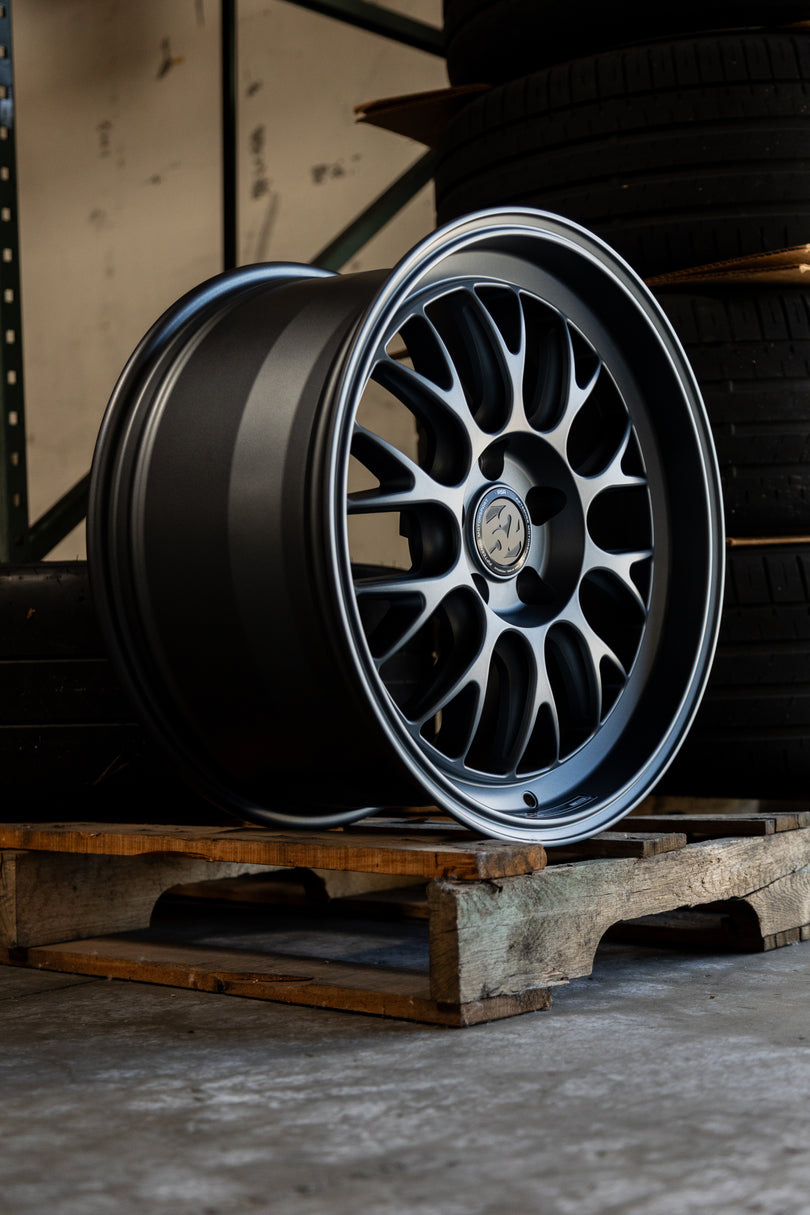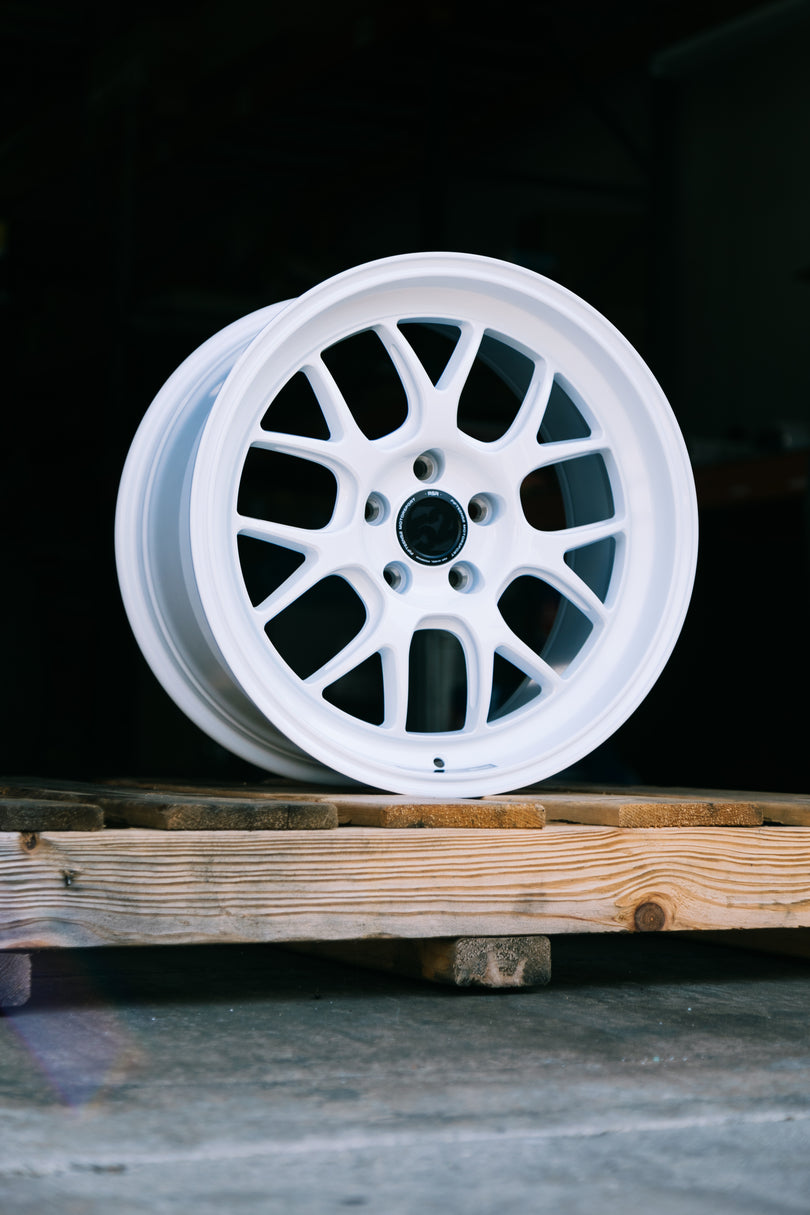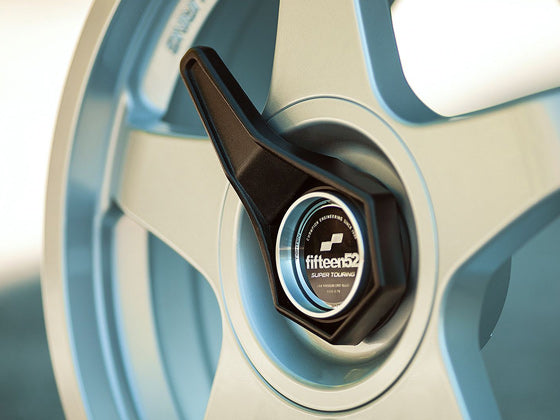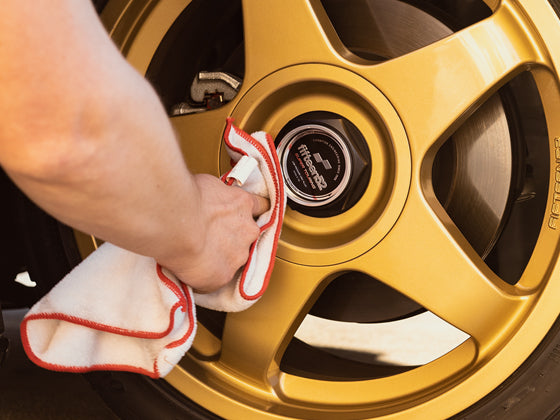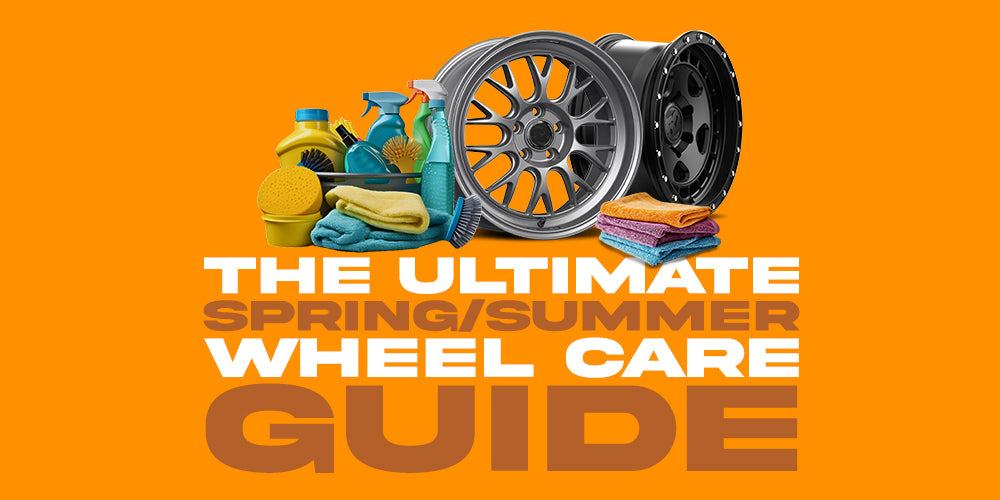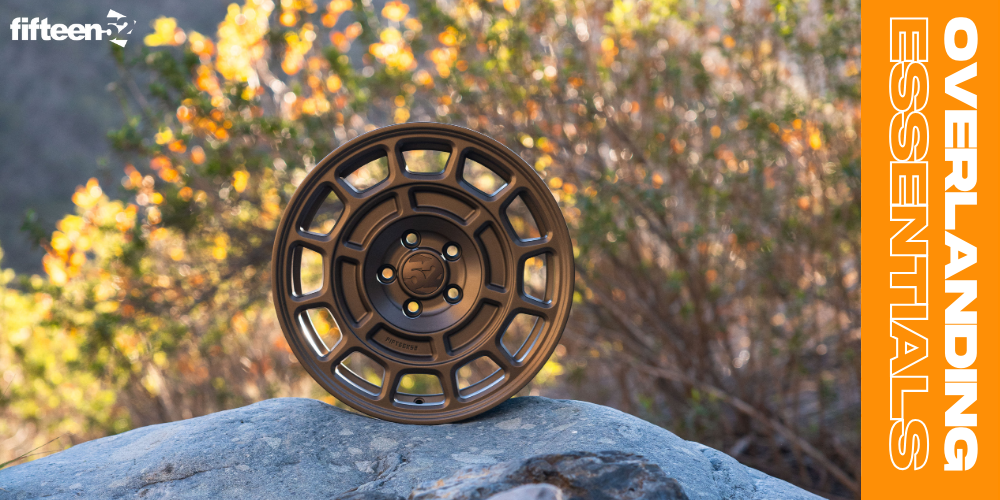
Cleaning Techniques
- Initial Rinse
- Purpose: Removing loose dirt and debris is essential to prevent scratching the wheel surface during subsequent cleaning steps.
- Method: Use a garden hose with moderate pressure or a pressure washer set to a low setting to rinse the wheels thoroughly. This initial rinse helps dislodge loose contaminants and prepares the surface for the application of cleaner.
- Application of Wheel Cleaner
- Choosing a Cleaner: Select a pH-balanced wheel cleaner that is safe for the specific finish of your fifteen52 wheels (e.g., painted, polished, or anodized finishes). Avoid cleaners with harsh chemicals that can strip the finish. Brands such as Koch-Chemie, Carpro, Griot's, and Gyeon offer excellent pH-balanced wheel cleaners suitable for various finishes.
- Application: Spray the cleaner evenly across the wheel surface, ensuring it covers all areas, including hard-to-reach spots around the lug nuts and within the spokes. Allow the cleaner to sit for the recommended time as per the product instructions to break down dirt and brake dust.
- Scrubbing the Wheels
- Tools: Use a soft-bristle wheel brush to avoid scratching the surface. For intricate designs and tight spaces, use a detailing brush or a toothbrush.
- Technique: Gently scrub the wheel surface in circular motions to lift off dirt and grime. Pay special attention to areas with heavy buildup, such as around the brake calipers.
- Rinsing Off the Cleaner
- Thorough Rinse: Use plenty of water to rinse off the cleaner completely. Any residue left behind can cause streaking or damage the finish.
- Pressure Washer: If using a pressure washer, ensure it is on a low setting to avoid damaging the wheel surface.
- Drying the Wheels
- Microfiber Cloth: Use a clean, dry microfiber cloth to dry the wheels. Microfiber is gentle on the finish and effectively absorbs water without leaving streaks.
- Air Blower: For a thorough dry, use an air blower to remove water from hard-to-reach areas, preventing water spots.
-
Additional Note: Consider using a product like Gyeon WetCoat on the wheels before drying. Gyeon Wet Coat is a hydrophobic spray sealant that helps repel water, making the drying process easier and more efficient. It can also provide an extra layer of protection to the wheel surface.

Protection Against Environmental Elements
- Application of Wheel Sealant
- Purpose: Wheel sealants provide a protective barrier against contaminants like brake dust, road salt, and UV rays.
- Application: Apply the sealant according to the manufacturer’s instructions. Typically, this involves applying a small amount of product to an applicator pad, spreading it evenly over the wheel, and allowing it to cure before buffing off any excess with a microfiber cloth.
- Frequent Cleaning
- Regular Maintenance: Clean your wheels more often during the spring and summer to prevent the buildup of contaminants that can lead to corrosion or discoloration. Aim for at least once a week if possible.
- Avoiding Harsh Chemicals
- Chemical Caution: Steer clear of acidic or highly alkaline cleaners, as they can strip away protective coatings and damage the wheel finish. Stick to products specifically designed for wheel care.
- Inspection for Damage
- Regular Checks: Inspect your wheels regularly for chips, scratches, or other damage. Address minor issues promptly to prevent them from becoming larger problems. Small chips can often be repaired with touch-up paint or clear coat.

Maintaining the Wheel Finish
- Using pH-Balanced Cleaners
- Importance: pH-balanced cleaners are formulated to be gentle on your wheel’s finish, preserving its appearance and protective coatings.
- Selection: Choose cleaners that are explicitly labeled as pH-balanced and safe for your type of wheel finish. Koch-Chemie, Carpro, Griot's, and Gyeon all offer excellent options that are safe for various wheel finishes.
- Polishing the Wheels
- Purpose: Polishing enhances the shine and adds a layer of protection. It can also remove minor imperfections and oxidation.
- Method: Apply a non-abrasive wheel polish using a foam applicator pad. Work in small sections, applying the polish in circular motions. Buff the polish off with a clean microfiber cloth to reveal a glossy finish.
- Storing Wheels Properly
- Storage Conditions: If you switch between seasonal wheels, store the off-season set in a cool, dry place away from direct sunlight. Before storage, ensure the wheels are clean and completely dry to prevent corrosion and mold growth.
- Storage Method: Use wheel storage bags or covers to protect them from dust and moisture. Store wheels horizontally, stacking them carefully to avoid pressure damage, or use a wheel rack if available.
- Protecting Against Weather Conditions
- Weather-Specific Products: For regions with extreme weather, consider using a robust sealant designed for high durability. Products with higher resistance to UV rays, water, and dirt will provide better protection during intense summer conditions or heavy rains.
- Reapplication: Reapply the sealant periodically, especially after heavy cleaning or exposure to harsh conditions, to maintain optimal protection.
Proper care and maintenance of your fifteen52 wheels during the spring and summer months are essential for preserving their appearance and functionality. By following the cleaning techniques, protection measures, and finish maintenance steps outlined in this guide, you can ensure your wheels remain in top condition, enhancing both the performance and aesthetics of your vehicle.
Regular attention to wheel care not only prolongs the life of your wheels but also contributes to a safer and more enjoyable driving experience.


